Amit Shah Inaugurates Training Program on Legislative Drafting in New Delhi
Syllabus:Governanace
- Union Home Minister Amit Shah inaugurated a specialized training program on legislative drafting in New Delhi, aimed at enhancing the understanding and application of legislative drafting principles among officials from Parliament, State Legislatures, ministries, statutory bodies, and other government departments.
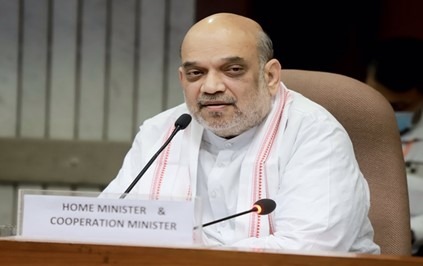
Focus on Repealing Obsolete Laws
- In his address, Mr. Shah highlighted the government’s initiative to repeal nearly 2,000 obsolete laws since 2015. He described legislative drafting as not merely a science or an art, but a skill that demands precision, transparency, and clarity in execution.
Advocating Clear and Accessible Laws
- Stressing the importance of simplicity in legal language, Mr. Shah urged officials to draft laws that are clear, concise, and free from ambiguity. He emphasized that easily understandable laws can help minimize conflicts and ensure better implementation.
Influence on Governance and Society
- Shah noted that legislative drafting significantly influences how policies and regulations are interpreted and implemented, ultimately affecting both society and the state. Therefore, regular training is essential to refine the skills of legislative draftsmen.
Capacity Building through Training
- The program, organized by the Institute of Constitutional and Parliamentary Studies (ICPS) in collaboration with the Parliamentary Research and Training Institute for Democracies (PRIDE), aims to build the capacity of government officers. Through this initiative, participants will gain valuable insights into effective legislative drafting, promoting democratic governance and upholding the rule of law.
Consider the following statements regarding legislative drafting as per the given text:
- It plays a key role in the interpretation of policies and their societal impact.
- It is a static process that, once codified, requires no revision.
- Training programs in legislative drafting are essential for promoting democratic governance.
Which of the statements given above is/are correct?
A. 1 and 2 only
B. 2 and 3 only
C. 1 and 3 only
D. 1, 2 and 3
Answer: C
Explanation:
- Statement 1 is correct because the text emphasizes that legislative drafting significantly affects the interpretation and implementation of policies, which in turn impacts society and the state.
- Statement 2 is incorrect as the passage suggests that legislative drafting is a skill that requires regular training and updating, implying it is a dynamic, not static, process.
- Statement 3 is correct since the training program is described as a means to build capacity for democratic governance and uphold the rule of law.
UGC launches new website, UTSAH and PoP portals to promote quality education
Syllabus:Governance
- The University Grants Commission (UGC) has unveiled several major initiatives to strengthen the quality of higher education in India, including a revamped official website, the UTSAH (Undertaking Transformative Strategies and Actions in Higher Education) Portal, and the Professor of Practice (PoP) Portal.
- These initiatives mark a significant milestone in the UGC’s efforts to align with the objectives of the National Education Policy (NEP) 2020 and to promote excellence in academic institutions across the country.
Overview of the Initiatives
- UGC’s New Website:The upgraded UGC website is designed to be more user-friendly and informative, featuring categorized content tailored for students, faculty, and universities. It also includes a dedicated section on the National Education Policy 2020, reflecting the UGC’s long-term vision for transforming higher education in India.
- UTSAH Portal:The UTSAH Portal serves as a centralized platform offering detailed insights into UGC’s initiatives aimed at qualitative reforms in higher education. It covers key areas such as curriculum enhancement, faculty development, research initiatives, and student support services.
- Professor of Practice (PoP) Portal:In line with the NEP 2020, the PoP Portal is a groundbreaking initiative that enables institutions to engage with industry and domain experts for academic roles. Professionals from various disciplines can register on the portal, providing their credentials, expertise, and preferred modes of engagement. Universities can post advertisements for PoP roles and access a database of eligible candidates to bring practical, real-world knowledge into classrooms.
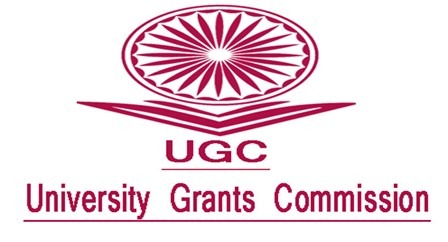
Key Features of the Initiatives
- UGC Website: Simplified interface with structured content for different stakeholders.
- UTSAH Portal: Focuses on policy-driven educational reforms across core academic areas.
- PoP Portal: Bridges academia and industry by facilitating expert appointments in universities.
Important Facts for Competitive Exams
- University Grants Commission (UGC) Founded: 1956
- UGC Headquarters: New Delhi
- Preceding Executive: Sukhadeo Thorat
- These steps by the UGC are aimed at transforming higher education in India by integrating innovation, practical expertise, and policy-driven reforms.
With reference to the UTSAH (Undertaking Transformative Strategies and Actions in Higher Education) Portal, consider the following statements:
- It serves as a digital platform for real-time academic audits of universities across India.
- It aligns with the objectives of the National Education Policy 2020 to drive qualitative reforms.
- It primarily focuses on school-level curriculum development.
Which of the statements given above is/are correct?
A. 1 and 2 only
B. 2 only
C. 1 and 3 only
D. 2 and 3 only
Answer: B
Explanation:
- Statement 1 is incorrect because the UTSAH Portal is not designed for conducting real-time academic audits of universities.
- Instead, it serves as a platform to provide detailed information on UGC’s initiatives for reforms in higher education.
- Statement 2 is correct as the portal aligns with the goals of the National Education Policy 2020 by focusing on qualitative improvements in higher education.
- Statement 3 is incorrect because the portal targets higher education reforms, not school-level curriculum development.
Chief Minister Pushkar Singh Dhami Inaugurates National Homoeopathic Convention ‘Homeocon 2023’ in Uttarakhand
Syllabus:Polity
- Uttarakhand Hosts ‘Homeocon 2023’: Chief Minister Pushkar Singh Dhami Inaugurates National Homoeopathic Convention
- Chief Minister Pushkar Singh Dhami inaugurated the National Homoeopathic Convention, Homeocon 2023, at Doon University, Dehradun, reaffirming the state’s commitment to promoting traditional medicine systems. The event highlighted homeopathy as the second most widely practiced system of medicine globally and underscored its relevance, particularly during the COVID-19 pandemic.
Significance of Homeopathy
- Homeopathy has established itself as a globally recognized and widely accepted alternative medical system. During the COVID-19 crisis, its holistic and patient-centric approach demonstrated valuable support in health care. The convention emphasized integrating homeopathy with conventional medicine to provide cost-effective, accessible, and holistic healthcare solutions.
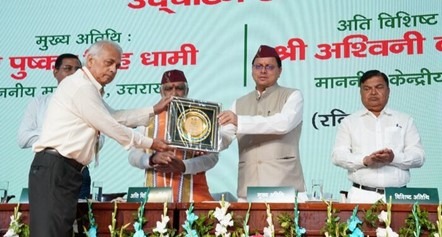
AYUSH and Government Commitment
- The event aligns with the broader goals of the Ministry of AYUSH, which was established in 2014 to oversee the development, promotion, and regulation of India’s traditional systems of medicine, including Ayurveda, Yoga, Naturopathy, Unani, Siddha, and Homeopathy. The Ministry supports education, research, and clinical outreach in these fields.
- Chief Minister Dhami reaffirmed the state government’s dedication to establishing Uttarakhand as a leading AYUSH hub, supporting both economic development and improved public health outcomes through initiatives such as Homeocon 2023.
Uttarakhand: A Center for Traditional Medicine
- Uttarakhand, located in North India, is increasingly recognized as a significant center for traditional medicine and wellness practices:
- Rishikesh, internationally famed for its yoga heritage, gained global attention after the Beatles’ 1968 visit. It remains a prominent destination for spiritual seekers and yoga practitioners.
- Dehradun, the state’s capital, serves as the administrative headquarters and hosted Homeocon 2023.
- Jim Corbett National Park, a vital conservation site, protects the endangered Bengal tiger and a diverse range of wildlife.
- The Alpine Musk Deer, Uttarakhand’s official state animal, symbolizes the region’s commitment to biodiversity and conservation.
Key Government Figures
- Chief Minister: Pushkar Singh Dhami – Leading efforts to integrate traditional medicine into mainstream healthcare.
- Governor: Gurmeet Singh – The constitutional head representing the central government in the state.
- Through conventions like Homeocon 2023 and supportive policies, Uttarakhand continues to position itself as a national and global leader in AYUSH-based healthcare and wellness tourism.
Consider the following statements about the Ministry of AYUSH:
- It was carved out as a separate ministry from the Department of Indian Systems of Medicine and Homoeopathy (ISM&H) in 2014.
- It regulates both traditional medicine systems and modern pharmaceuticals used in integrative therapies.
- One of its objectives is to promote India as a global wellness destination under the “Heal in India” initiative.
Which of the statements given above is/are correct?
A. 1 and 3 only
B. 2 and 3 only
C. 1 and 2 only
D. 1, 2 and 3
Answer:A
Explanation:
- Statement 1 is correct — the Ministry was created in 2014 from earlier departments.
- Statement 2 is incorrect — AYUSH regulates traditional systems, not modern pharmaceuticals.
- Statement 3 is correct — “Heal in India” is part of India’s wellness diplomacy.
Geeta Rao Gupta appointed as US Ambassador at Large for Global Women’s Issues
- The US Senate has confirmed Geeta Rao Gupta, an Indian American, as the Ambassador-at-Large for Global Women’s Issues at the State Department. The Senate approved her nomination with a close vote of 51 to 47. The State Department expressed enthusiasm for Gupta’s leadership in advancing the rights of women and girls through US foreign policy.
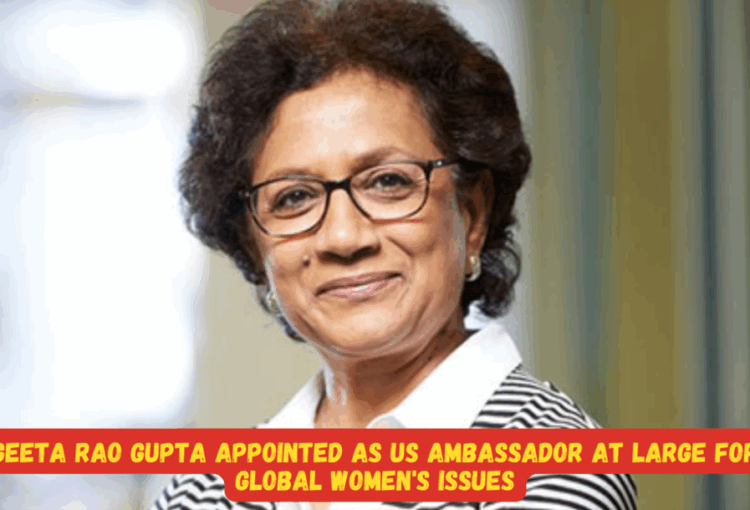
Gupta’s Perspective on Women’s Issues
- During her confirmation hearing, Gupta highlighted the widespread inequalities and indignities faced by women globally that limit their full participation in the economy.
- She emphasized that women often live with daily fear of violence, which restricts their freedom and mobility.
- Gupta also pointed out the heightened vulnerabilities of women during conflicts, emergencies, and humanitarian crises, affecting both their safety and their ability to support their families.
About Geeta Rao Gupta
- Born in Mumbai, India in 1956, Geeta Rao Gupta is a renowned expert on gender issues and HIV/AIDS.
- She has served as the executive director of the 3D Program for Girls and Women and has been a senior fellow at the United Nations Foundation since 2017.
- Gupta is well-known for her work on AIDS prevention and addressing women’s vulnerability to HIV.
- She advocates strongly for the economic and social empowerment of women as a vital strategy to combat disease, poverty, and hunger.
- Recently, US President Joe Biden nominated her for the role of Ambassador-at-Large for Global Women’s Issues.
Consider the following statements about the role of the US Ambassador-at-Large for Global Women’s Issues:
- The position was created to integrate gender perspectives into US foreign policy and international development.
- The Ambassador leads the Office of Global Women’s Issues within the Department of State.
- The position requires Senate confirmation and reports directly to the Secretary of State.
Which of the statements given above is/are correct?
A. 1 and 2 only
B. 2 and 3 only
C. 1 and 3 only
D. 1, 2 and 3
Answer:D
Explanation:
- All three statements are correct. The position of the US Ambassador-at-Large for Global Women’s Issues was established to integrate gender perspectives into US foreign policy and international development efforts.
- The Ambassador leads the Office of Global Women’s Issues within the Department of State, which is responsible for advancing gender equality worldwide.
- Additionally, the position requires confirmation by the US Senate and the Ambassador reports directly to the Secretary of State, reflecting the role’s high-level status in shaping US diplomatic priorities on women’s rights.
Manoj Soni to take oath as UPSC chairman
Syllabus:Polity
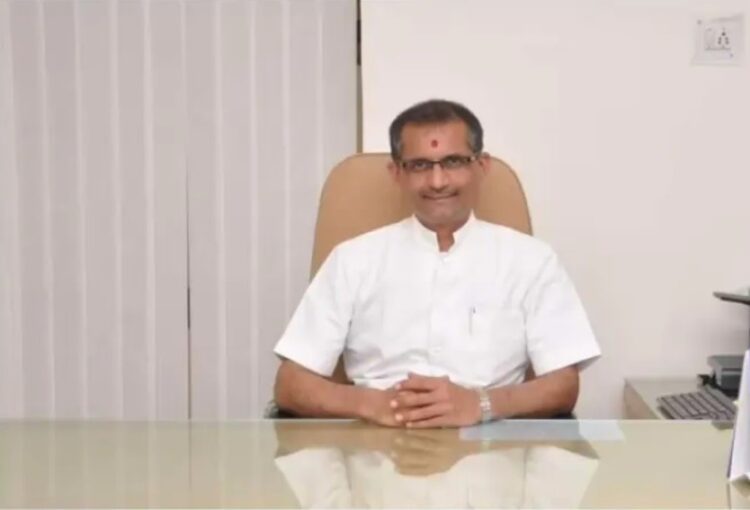
- Educationist Manoj Soni is set to assume charge as the Chairman of the Union Public Service Commission (UPSC).
- He joined the Commission as a member on June 28, 2017, and has been performing the duties of the UPSC Chairman since April 5, 2022. Before his tenure at UPSC, Soni served three terms as Vice-Chancellor—two consecutive terms from August 1, 2009, to July 31, 2015, at Dr. Babasaheb Ambedkar Open University (BAOU), Gujarat, and one term from April 2005 to April 2008 at The Maharaja Sayajirao University of Baroda (MSU Baroda).
- A political science scholar specializing in international relations, he taught the subject at Sardar Patel University (SPU), Vallabh Vidyanagar, from 1991 to 2016, except during his vice-chancellorships.
Awards and Recognitions
- In 2013, Soni was honored as the “Honorary Mayor-President of the City of Baton Rouge” by the Mayor-President of Baton Rouge, Louisiana, USA, recognizing his leadership in empowering disadvantaged communities through IT literacy.
- In 2015, he received the World Education Congress Global Award for Distance Learning Leadership from the Chartered Institute of Management Accountants, London, UK.
- Soni has served on the Boards of Governors of various higher education and public administration institutions.
- Additionally, he was a member of a quasi-judicial body constituted by the Gujarat Legislature to regulate fees of unaided professional institutions in the state.
About the Union Public Service Commission (UPSC)
- The UPSC is India’s premier central recruitment agency responsible for recruiting Group ‘A’ officers across various Government of India departments.
- It conducts appointments and examinations for posts in central government establishments, including public sector undertakings and autonomous bodies.
- The Department of Personnel and Training acts as the central personnel agency of India.
- Established on October 1, 1926, under the Government of India Act, 1919, the UPSC is headquartered in New Delhi, with regional offices in cities including Allahabad, Bhopal, Chandigarh, Chennai, Guwahati, Hyderabad, Kolkata, Lucknow, Mumbai, and Patna.
- The Commission is led by a Chairman appointed by the President of India, supported by several members also appointed by the President. These members come from diverse backgrounds such as civil services, armed forces, and academia.
Functions of UPSC
- UPSC conducts several competitive examinations for Group ‘A’ officer recruitment, the most prestigious being the Civil Services Examination (commonly known as the IAS exam).
- This three-tier exam evaluates candidates on general studies, English proficiency, and optional subjects.
- Other Group ‘A’ services under UPSC’s purview include the Indian Foreign Service, Indian Police Service, and Indian Audit and Accounts Service.
- An independent constitutional authority, UPSC’s decisions are autonomous and not subject to external approval.
- The Commission is dedicated to merit-based recruitment, ensuring high-caliber officers join the civil services.
Significance of UPSC
- UPSC has played a crucial role in shaping the Indian civil service, ensuring it remains impartial, efficient, and responsive to public needs.
- The Commission promotes meritocracy and excellence, contributing significantly to India’s governance and development.
- Its commitment to impartiality and quality has earned it widespread respect across the nation.
Consider the following statements regarding the Union Public Service Commission (UPSC) and Manoj Soni’s role:
- The UPSC was established under the Government of India Act, 1919, and is an independent constitutional body responsible for recruitment of Group ‘A’ officers in India.
- Manoj Soni served as Vice-Chancellor of two universities before joining UPSC, with expertise primarily in administrative law and constitutional law.
- The Chairman and members of UPSC are appointed by the President of India and the Commission’s decisions do not require approval from any other authority.
- The Department of Personnel and Training functions under the UPSC as its central administrative arm.
Which of the above statements is/are correct?
A. 1 and 3 only
B. 2 and 4 only
C. 1, 3 and 4 only
D. 1, 2 and 3 only
Answer: A
Explanation:
- Statement 1 is correct as UPSC was established under the Government of India Act, 1919, and is an independent constitutional body responsible for recruitment of Group ‘A’ officers.
- Statement 2 is incorrect because Manoj Soni’s specialization is in political science and international relations, not administrative or constitutional law.
- Statement 3 is correct; the Chairman and members are appointed by the President of India, and the UPSC functions independently without needing external approvals.
- Statement 4 is incorrect because the Department of Personnel and Training (DoPT) is a separate central personnel agency, not functioning under UPSC.
Air Marshal Ashutosh Dixit takes over as Deputy Chief of Air Staff
Syllabus:Polity
- Air Marshal Ashutosh Dixit has assumed the position of Deputy Chief of the Air Staff, as announced by the Defence Minister. An alumnus of the National Defence Academy, Air Marshal Dixit was commissioned into the fighter stream on December 6, 1986.
- He is a qualified flying instructor and an experimental test pilot with over 3,300 hours of flying experience across fighter, trainer, and transport aircraft.
- His operational experience includes participation in Operations ‘Safed Sagar’ and ‘Rakshak’.
- Air Marshal Dixit has commanded a Mirage 2000 squadron, a frontline fighter base in the Western sector, and a premier fighter training base.
- His previous roles include Principal Director Air Staff Requirements, Assistant Chief of the Air Staff (Projects), and Assistant Chief of the Air Staff (Plans) at Air Headquarters.
- He has also served as the Air Defence Commander of the Southern Air Command and as Senior Air Staff Officer of the South Western Air Command before taking charge as Deputy Chief of the Air Staff.
- The Deputy Chief of the Air Staff (DCAS) is an Air Marshal-ranked officer in the Indian Air Force (IAF) and serves as the second-in-command of the Air Force.
- The DCAS assists the Chief of the Air Staff in managing operational readiness, strategic planning, and execution of the IAF’s missions and activities.
- The officeholder may change due to regular rotations and promotions. For the latest updates, official IAF sources should be consulted.
Consider the following statements regarding the Deputy Chief of the Air Staff (DCAS) and Air Marshal Ashutosh Dixit:
- The DCAS is the second-highest ranking officer in the Indian Air Force and is responsible for assisting the Chief of the Air Staff in operational planning and readiness.
- Air Marshal Ashutosh Dixit, before becoming DCAS, has served as the Principal Director Air Staff Requirements and has commanded a Mirage 2000 squadron.
- Participation in operations such as ‘Safed Sagar’ and ‘Rakshak’ is a mandatory prerequisite for appointment as DCAS.
- The DCAS holds a three-star rank, which is equivalent to a Lieutenant General in the Indian Army.
Which of the above statements is/are correct?
A. 1, 2 and 4 only
B. 1 and 3 only
C. 2 and 4 only
D. All of the above
Answer: A
Explanation:
- Statement 1 is correct as the DCAS is indeed the second-in-command of the IAF and assists the Chief in operational readiness and planning.
- Statement 2 is correct; Air Marshal Dixit served as Principal Director Air Staff Requirements and commanded a Mirage 2000 squadron.
- Statement 3 is incorrect because while participation in certain operations adds to an officer’s credentials, it is not a mandatory requirement for becoming DCAS.
Statement 4 is correct since the rank of Air Marshal (DCAS) is a three-star rank, equivalent to Lieutenant General in the Army.
Laos to Host ASEAN Tourism Forum 2024 with Quality and Responsible Tourism -Sustaining ASEAN Future Theme
Syllaus:Environment
- Laos is set to host the annual ASEAN Tourism Forum in January 2024, in its capital city, Vientiane.
- The forum’s theme, “Quality and Responsible Tourism — Sustaining ASEAN Future,” underscores the commitment to promoting sustainable and responsible tourism practices in the region.
- The event will feature a tourism exhibition aimed at boosting Laos’s tourism sector and enhancing service standards in related businesses.
- According to Suanesavanh Vignaket, Minister of Information, Culture, and Tourism, the forum will highlight Laos as a prime nature-based tourism destination.
- This marks Laos’s third time hosting the ASEAN Tourism Forum, with previous editions held in 2004 and 2013, reflecting the country’s growing prominence as a Southeast Asian tourism hub.
- The Lao government is focused on showcasing its scenic landscapes, rich local traditions, and lifestyles, which continue to attract foreign tourists.
- Despite the severe impact of the COVID-19 pandemic on the tourism industry, Laos witnessed a significant rebound in visitor numbers, with over 831,000 foreign tourists in the first quarter of 2023, compared to 211,898 visitors during the peak pandemic period in the first half of 2022.
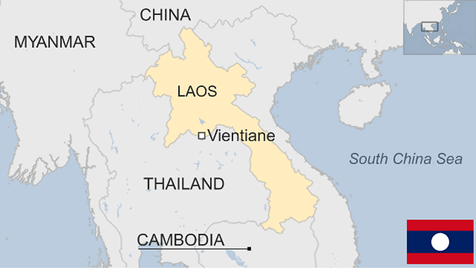
Key facts about Laos include:
- Capital: Vientiane
- Currency: Lao kip (LAK)
- President: Thongloun Sisoulith (as of 2021)
- Official language: Lao
- Population: Around 7.2 million
- Geography: Situated in Southeast Asia, Laos shares borders with Thailand, Cambodia, Vietnam, China, and Myanmar.
With reference to the ASEAN Tourism Forum 2024 to be hosted by Laos, consider the following statements:
- The theme of the forum aligns with ASEAN’s long-term strategic plan to promote green investments in cross-border tourism infrastructure.
- Laos has hosted the ASEAN Tourism Forum more than once prior to 2024, reflecting its sustained engagement with regional tourism diplomacy.
- The 2024 forum aims solely at reviving post-COVID tourism without an explicit focus on sustainable practices or service quality.
Which of the statements given above is/are correct?
A. 1 and 2 only
B. 2 only
C. 1 and 3 only
D. 2 and 3 only
Answer: B. 2 only
Explanation:
- Statement 1 is incorrect because although the theme emphasizes “Quality and Responsible Tourism — Sustaining ASEAN Future,” it does not explicitly reference ASEAN’s green infrastructure investment strategy or a long-term strategic plan in the provided context.
- Statement 2 is correct. Laos previously hosted the ASEAN Tourism Forum in 2004 and 2013, and is doing so again in 2024, indicating a consistent role in regional tourism promotion.
- Statement 3 is incorrect. The theme and ministerial statements clearly emphasize sustainable tourism and quality service, not merely post-COVID revival.
International Day of Light 2023 celebrates on 16th May
Syllabus:Important Day
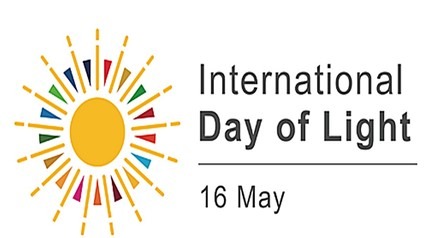
- The International Day of Light is celebrated globally on May 16 each year to commemorate a landmark moment in scientific history—the successful operation of the first laser by physicist Theodore Maiman in 1960.
- This observance aims to highlight the vital role light plays in various spheres of life and to promote international scientific cooperation for advancing peace and sustainable development.
Significance of the Day
- The International Day of Light underscores the multifaceted importance of light and light-based technologies across disciplines:
- In science and technology, it serves as a catalyst for innovation, particularly in fields like photonics, telecommunications, medicine, and clean energy.
- In culture and art, light continues to inspire creativity and expression.
- In education, light-based tools are revolutionizing learning and research.
- In the context of sustainable development, technologies based on light are essential in achieving global goals such as clean energy, health, and information access.
- The day acts as a platform to enhance public awareness, foster interdisciplinary partnerships, and celebrate the achievements of scientists, engineers, and researchers who contribute to the advancement of light technologies and their applications.
Historical Background
- The United Nations Educational, Scientific and Cultural Organization (UNESCO) officially proclaimed the International Day of Light on December 20, 2017, with the aim of celebrating the transformative power of light.
- The date, May 16, was chosen to honor Theodore Maiman’s invention of the laser—a cornerstone of modern light-based technology.
- Since its establishment, the International Day of Light has evolved into a global event, marked by scientific conferences, public lectures, exhibitions, and educational activities that promote the responsible use of light for the betterment of society.
With reference to the International Day of Light, consider the following statements:
- The day commemorates the development of the first optical fiber system, which revolutionized global communication networks in the 1970s.
- It is observed annually on May 16 to mark a milestone scientific event related to laser technology.
- The day aims to promote the role of light in achieving the United Nations Sustainable Development Goals (SDGs).
- The initiative is led by the International Telecommunication Union (ITU), a specialized agency of the United Nations.
Which of the statements given above is/are correct?
A. 2 and 3 only
B. 1 and 4 only
C. 1, 2 and 4 only
D. 2, 3 and 4 only
Answer: A. 2 and 3 only
Explanation:
- Statement 1: Incorrect. The International Day of Light does not commemorate the development of optical fiber systems in the 1970s. It marks the successful operation of the first laser by Theodore Maiman in 1960.
- Statement 2: Correct. The day is observed on May 16 each year in recognition of the laser breakthrough by Maiman.
- Statement 3: Correct. One of the core aims of the International Day of Light is to highlight the role of light-based technologies in achieving the United Nations Sustainable Development Goals (SDGs) such as education, clean energy, and health.
- Statement 4: Incorrect. The initiative is coordinated by UNESCO, not the International Telecommunication Union (ITU).
Pune: Asia’s first subsea research lab at MIT-World Peace University
Syllabus: Miscellaneous

- In a landmark initiative for technical education and energy sector training, the MIT World Peace University (MIT-WPU), Pune, has inaugurated Asia’s first Centre for Subsea Engineering Research (CSER). The state-of-the-art facility is established in collaboration with Aker Solutions, a global engineering services provider, and aims to transform education, research, and skill development in subsea technologies critical to the oil and gas sector.
Bridging the Industry-Academia Skill Gap
- Spearheaded by the Department of Petroleum Engineering, the CSER is intended to address the persistent skill gap in India’s energy industry. According to Samarth Patwardhan, Head of the CSER and Professor of Petroleum Engineering at MIT-WPU, the lab is envisioned as a breeding ground for multi-disciplinary talent, capable of meeting the evolving demands of global subsea exploration and production systems.
An Experiential Learning Platform
- The facility is equipped to support real-time simulation of drilling and well-control systems, offering undergraduate and postgraduate students a rare opportunity to gain hands-on experience through curriculum-integrated experiments. In addition to academic learning, the lab supports professional training programs in subsea engineering and Industrial Safety and Health Engineering (ISHE), facilitating continued education and industry readiness.
Fostering Awareness and Collaboration
- Beyond academic instruction, the CSER is designed to serve a broader societal purpose by organizing educational outreach programs for school and college students and technical tours for industry professionals. These initiatives aim to enhance public understanding of subsea technologies and their significance in sustainable energy development.
- In pursuit of collaborative research and innovation, the lab seeks to establish national and international partnerships with industry and governmental agencies. Such collaborations are expected to catalyze innovation, address pressing challenges in offshore energy, and contribute to India’s energy security framework.
Role of Aker Solutions
- Aker Solutions has played a critical role in the realization of the CSER. From conceptualization to the final deployment of systems, the company has contributed expertise in design, procurement, fabrication, installation, and testing. The strategic alliance between Aker and MIT-WPU sets a precedent for how academia and industry can jointly enhance technical capacity and address sectoral skill shortages.
The Centre for Subsea Engineering Research (CSER) at MIT-World Peace University primarily aims to:
- Address the skill gap in India’s oil and gas subsea industry.
- Promote multidisciplinary research on marine biodiversity conservation.
- Facilitate joint academic-industry collaborations for subsea engineering innovations.
- Develop indigenous offshore drilling technology to replace imports.
Which of the statements given above are correct?
A) 1 and 2 only
B) 1 and 3 only
C) 2 and 4 only
D) 1, 3 and 4 only
Answer: B) 1 and 3 only
Explanation:
- The Centre for Subsea Engineering Research (CSER) at MIT-World Peace University primarily focuses on addressing the skill gap in the subsea oil and gas sector by providing practical training and multidisciplinary education (Statement 1).
- It also facilitates collaboration between academia and industry to foster innovation in subsea engineering (Statement 3).
- However, promoting multidisciplinary research on marine biodiversity conservation (Statement 2) is not the primary aim of CSER, as the lab’s focus is more technical and industry-specific rather than ecological or environmental conservation.
- Developing indigenous offshore drilling technology to replace imports (Statement 4) was not explicitly mentioned as a goal; the emphasis is more on training, research collaboration, and skill development rather than direct technology replacement.
- Hence, only statements 1 and 3 are correct.
AI Hallucinations
Syllabus: Science and Technology
- Recent advancements in artificial intelligence have brought increased attention to the problem of AI hallucinations.
- A report from OpenAI revealed that its latest models, o3 and o4-mini, show elevated rates of errors known as hallucinations—instances where AI systems produce incorrect or misleading information.
- According to the report, the o3 model hallucinated 33% of the time, while o4-mini’s hallucination rate was even higher at 48%.
- This trend raises concerns about the reliability of AI models as they grow more sophisticated.

Understanding AI Hallucinations:
- AI hallucinations refer to mistakes made by AI models, especially chatbots. Originally, the term described cases where the AI fabricated information—for example, a lawyer using ChatGPT to draft a court document found the chatbot had inserted fictitious citations.
- Now, hallucinations cover a wider range of errors, including generating responses that are factually correct but irrelevant to the user’s question.
Causes of AI Hallucinations:
- Large language models (LLMs) like ChatGPT and o3 create text by predicting sequences based on patterns learned from vast datasets, without truly understanding the content.
- This can lead to inaccurate outputs, especially when training data contains errors. Even with accurate data, LLMs may combine information in unexpected ways, resulting in hallucinations.
- Experts note that unlike humans, LLMs lack the ability to verify facts, which contributes to their propensity for errors.
Significance of OpenAI’s Findings:
- OpenAI’s report highlights that hallucinations may be an intrinsic challenge in LLMs. While early AI developments suggested the problem could be solved, and initial updates lowered hallucination rates, recent data indicates that the issue persists and is widespread.
- Other AI systems, such as those from DeepSeek, also show increased hallucination frequencies, raising doubts about AI’s dependability in critical domains like research and law.
Implications for AI Deployment:
- Given the high incidence of hallucinations, caution is advised when using AI models in sensitive areas.
- These systems are currently unreliable as research assistants or legal advisors because they can produce fabricated citations or fictional legal precedents.
- Experts believe hallucinations are a fundamental limitation of LLM technology. As AI models tackle more complex tasks, the risk of errors grows, creating a disconnect between user expectations and actual AI capabilities.
Consider the following statements about AI hallucinations as reported in recent developments:
- AI hallucinations refer exclusively to the generation of completely fabricated information by AI systems.
- Large Language Models (LLMs) generate text based on pattern recognition without true comprehension, which contributes to hallucinations.
- OpenAI’s latest models have successfully reduced hallucination rates to below 10%.
- The persistence of hallucinations suggests it may be an inherent limitation of current LLM architectures.
Which of the statements given above is/are correct?
A) 1 and 3 only
B) 2 and 4 only
C) 1, 2 and 4 only
D) All of the above
Answer: B) 2 and 4 only
Explanation:
- Statement 1 is incorrect because AI hallucinations now include not only fabricated information but also factually correct yet irrelevant outputs.
- Statement 2 is correct, as LLMs predict text based on patterns learned without understanding content, leading to errors.
- Statement 3 is incorrect; OpenAI’s report states hallucination rates for o3 and o4-mini are 33% and 48%, respectively, not below 10%.
- Statement 4 is correct since hallucinations appear to be an intrinsic challenge in current LLMs.

1 Comment
* * * Snag Your Free Gift: https://raslawcollege.com/index.php?ay0j72 * * * hs=41c988bc2c8b010593cc5ddaee960930* ххх*
May 21, 2025d9iy22